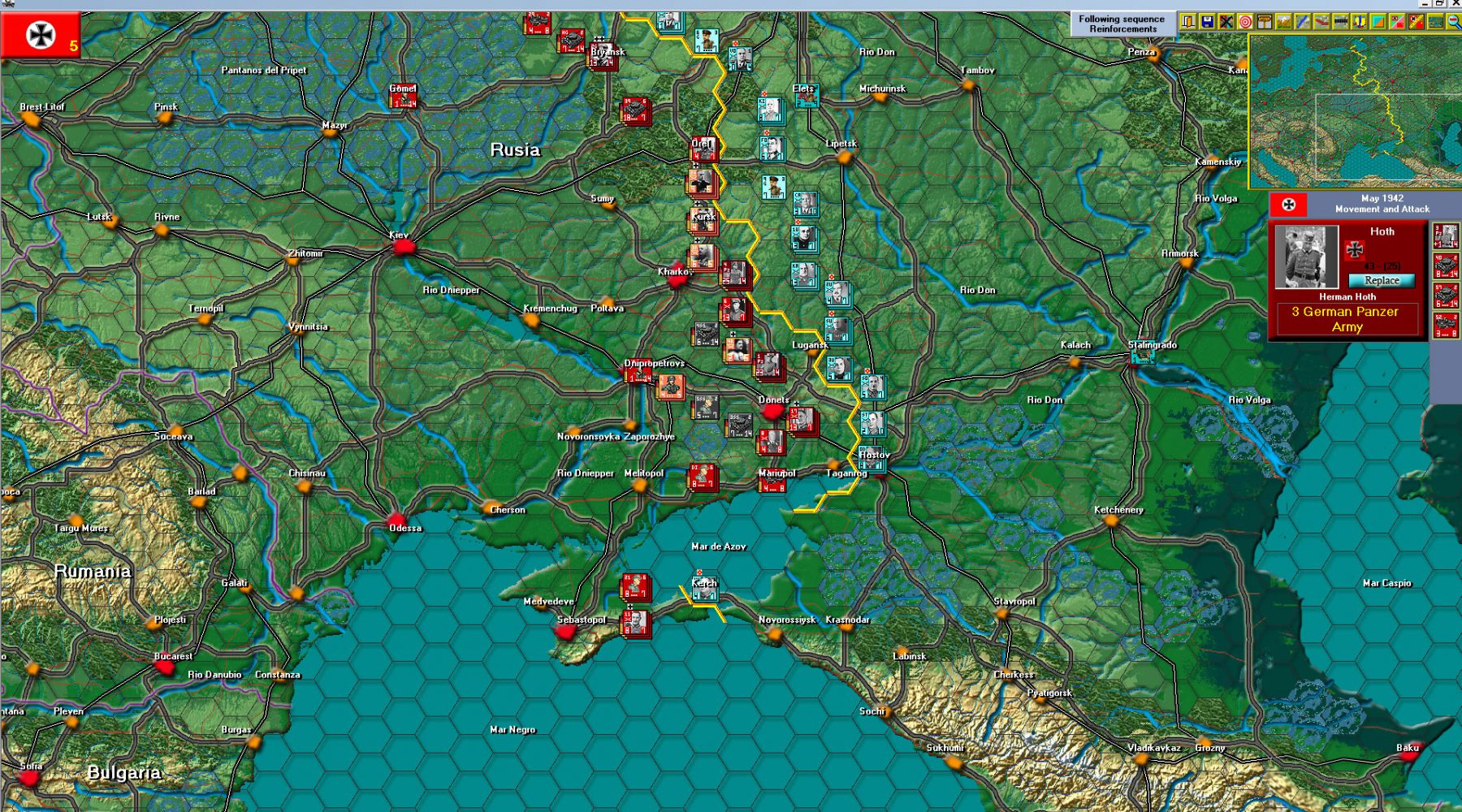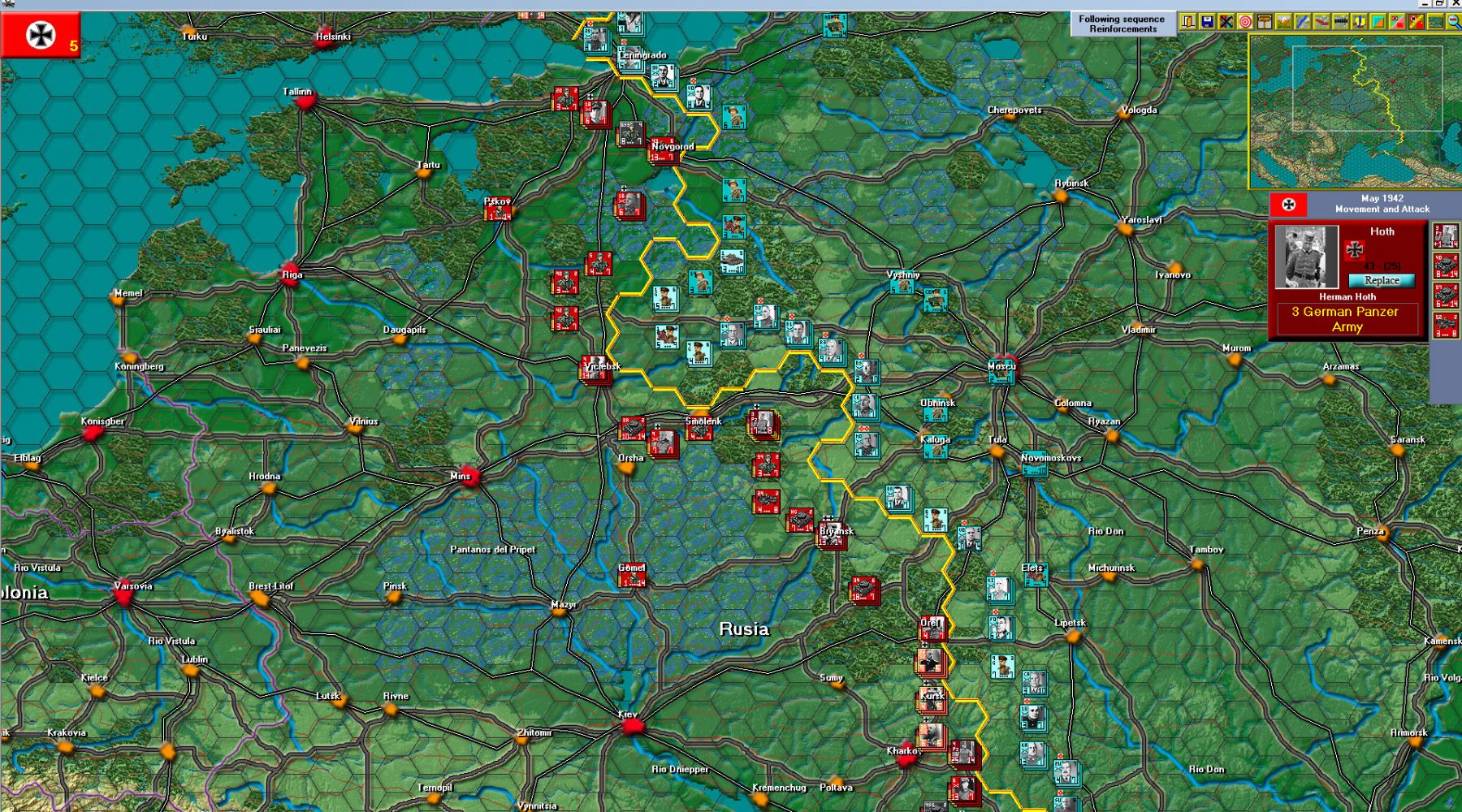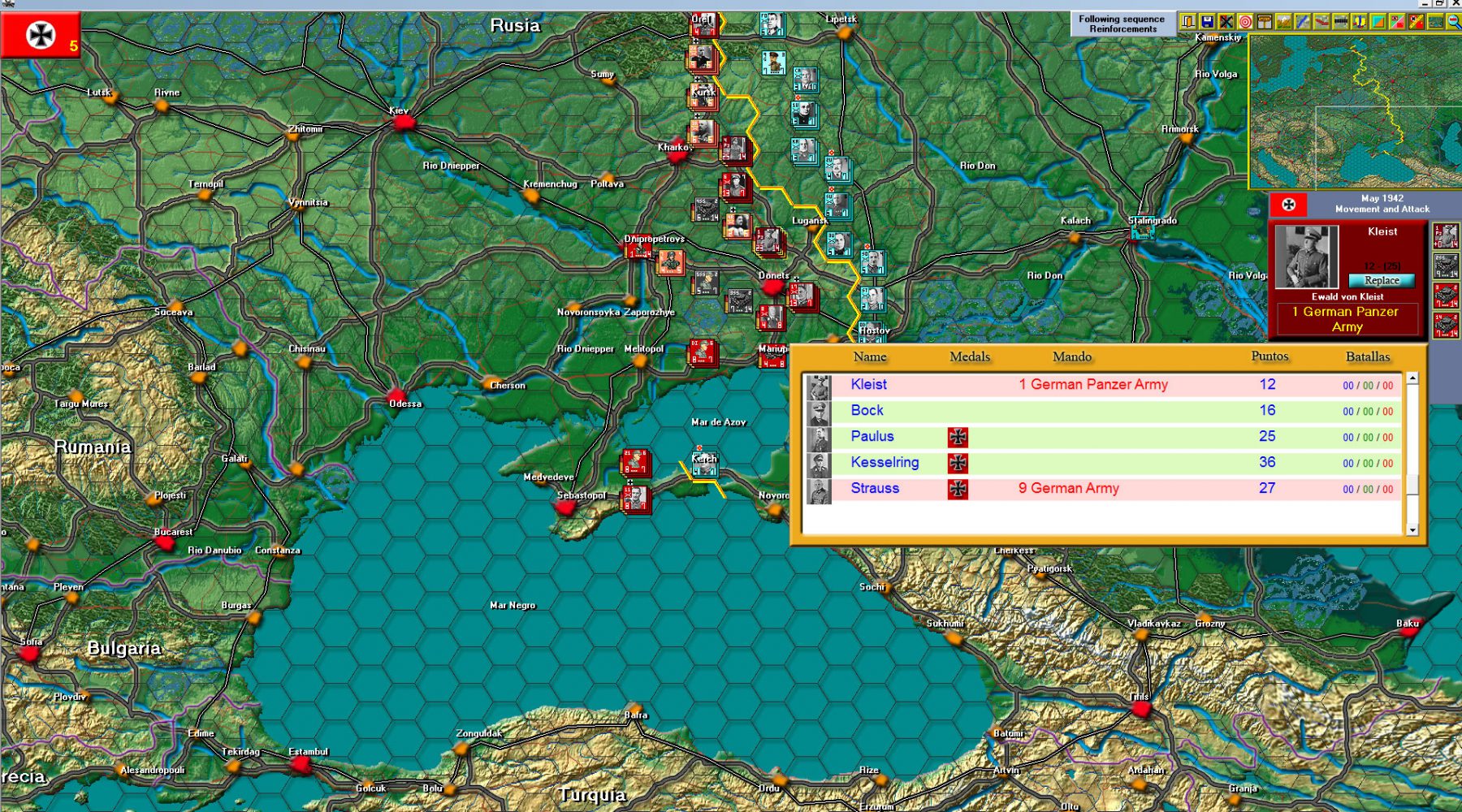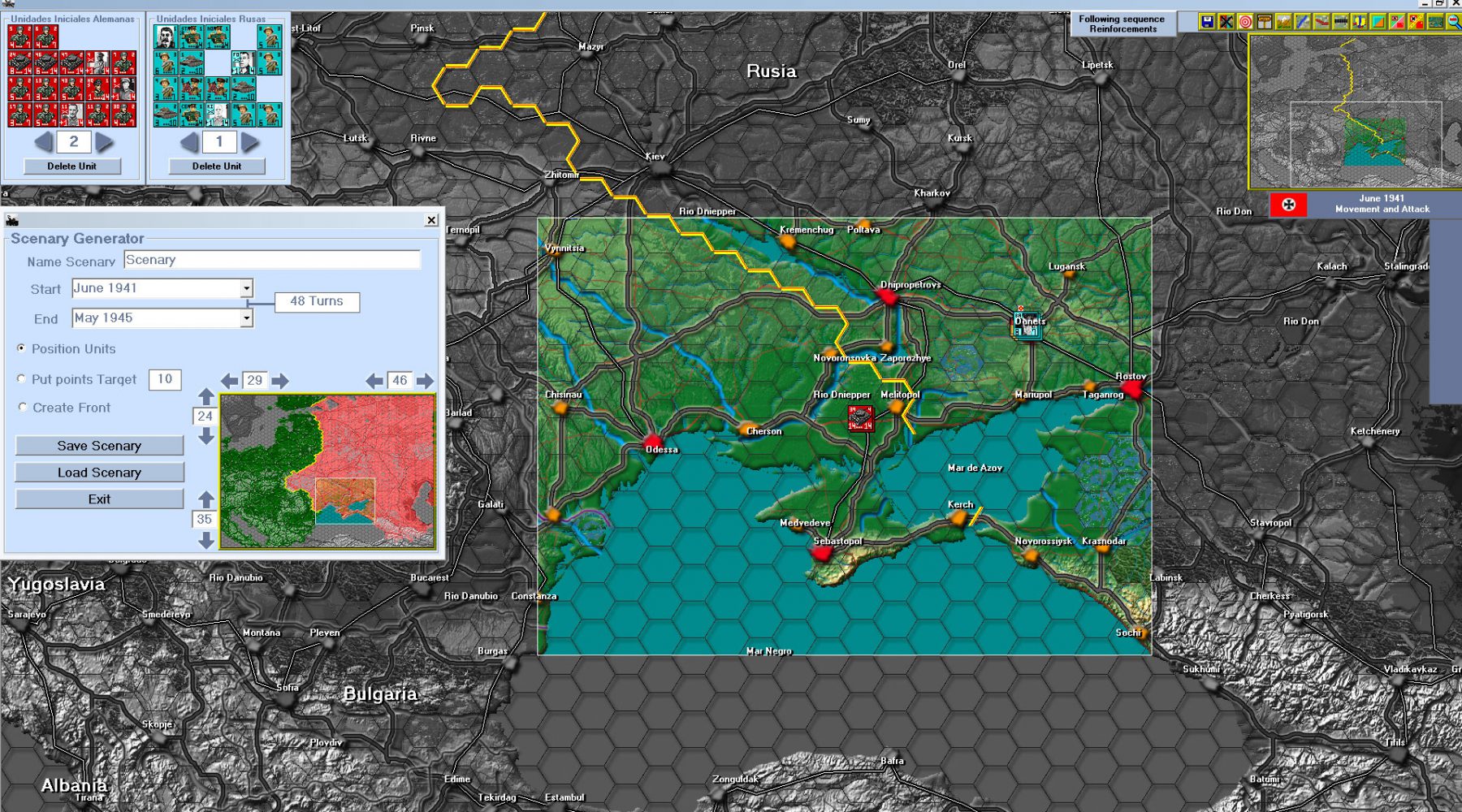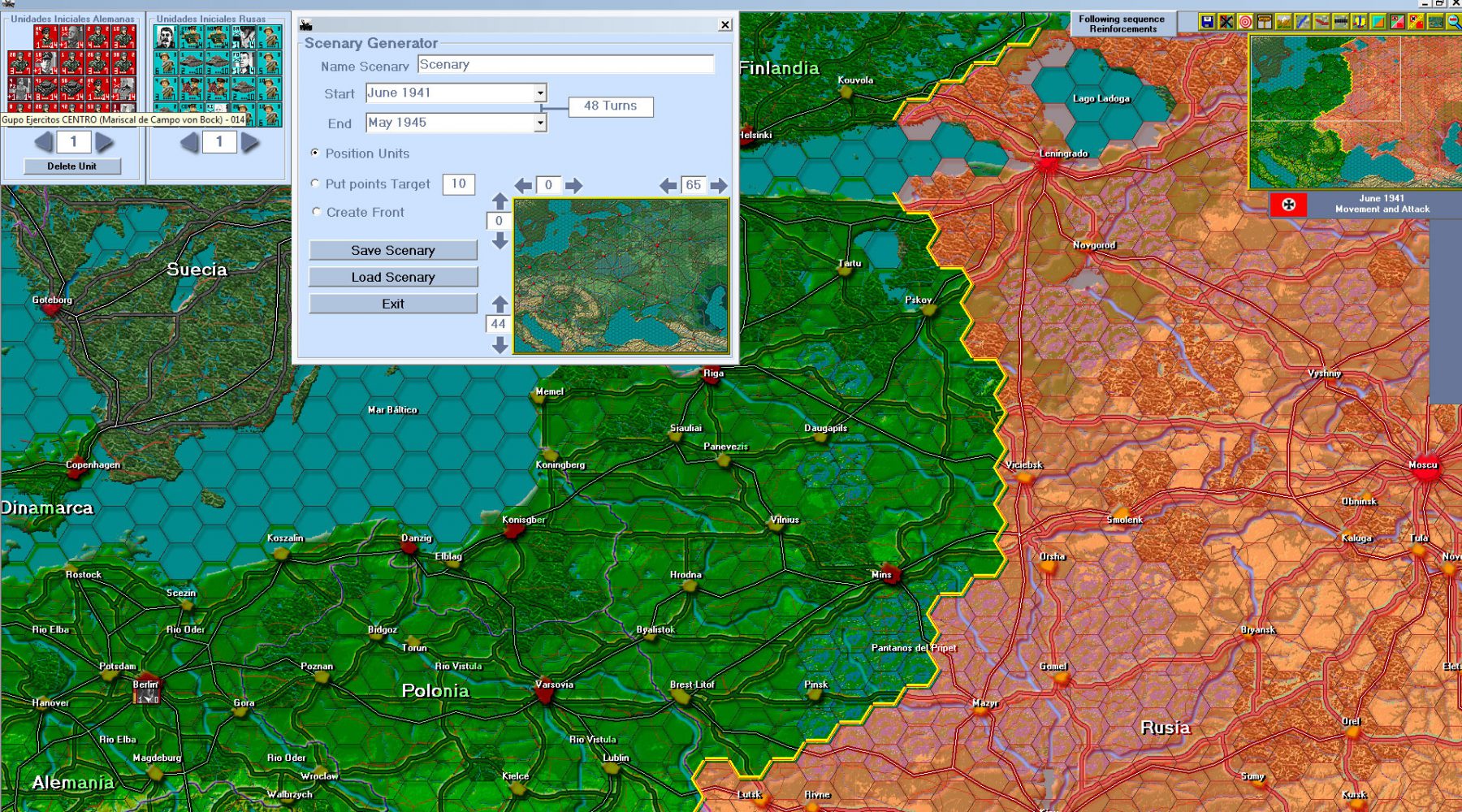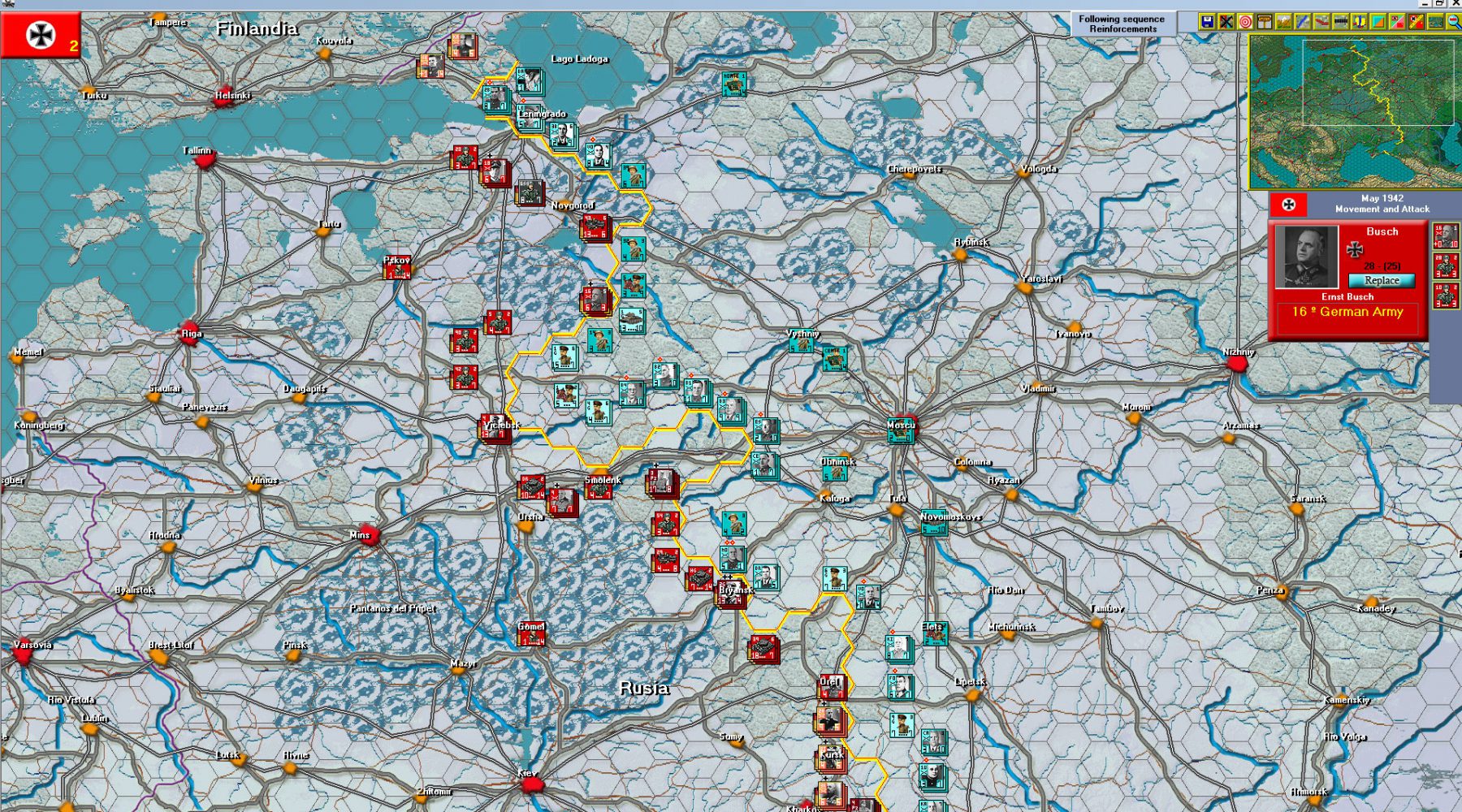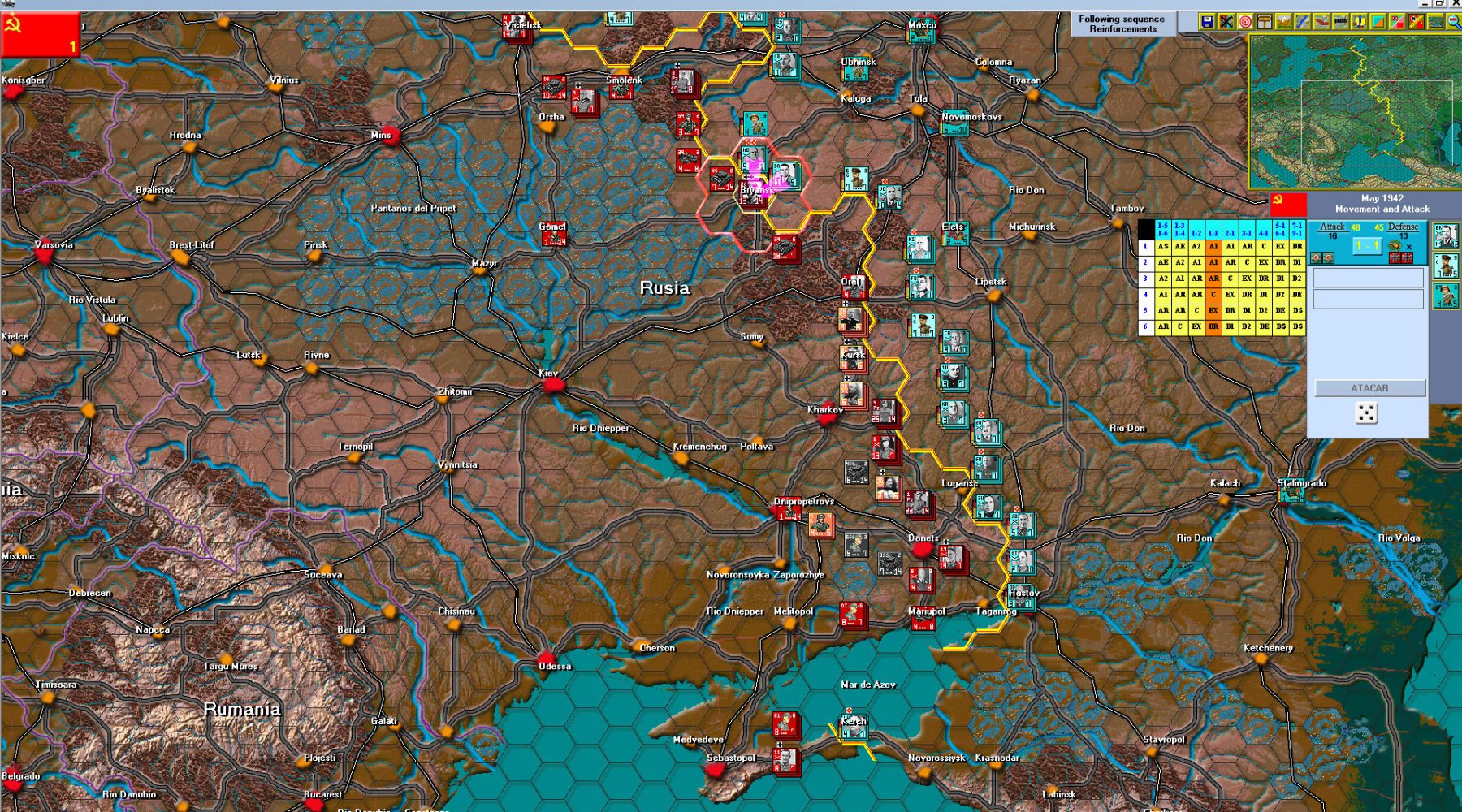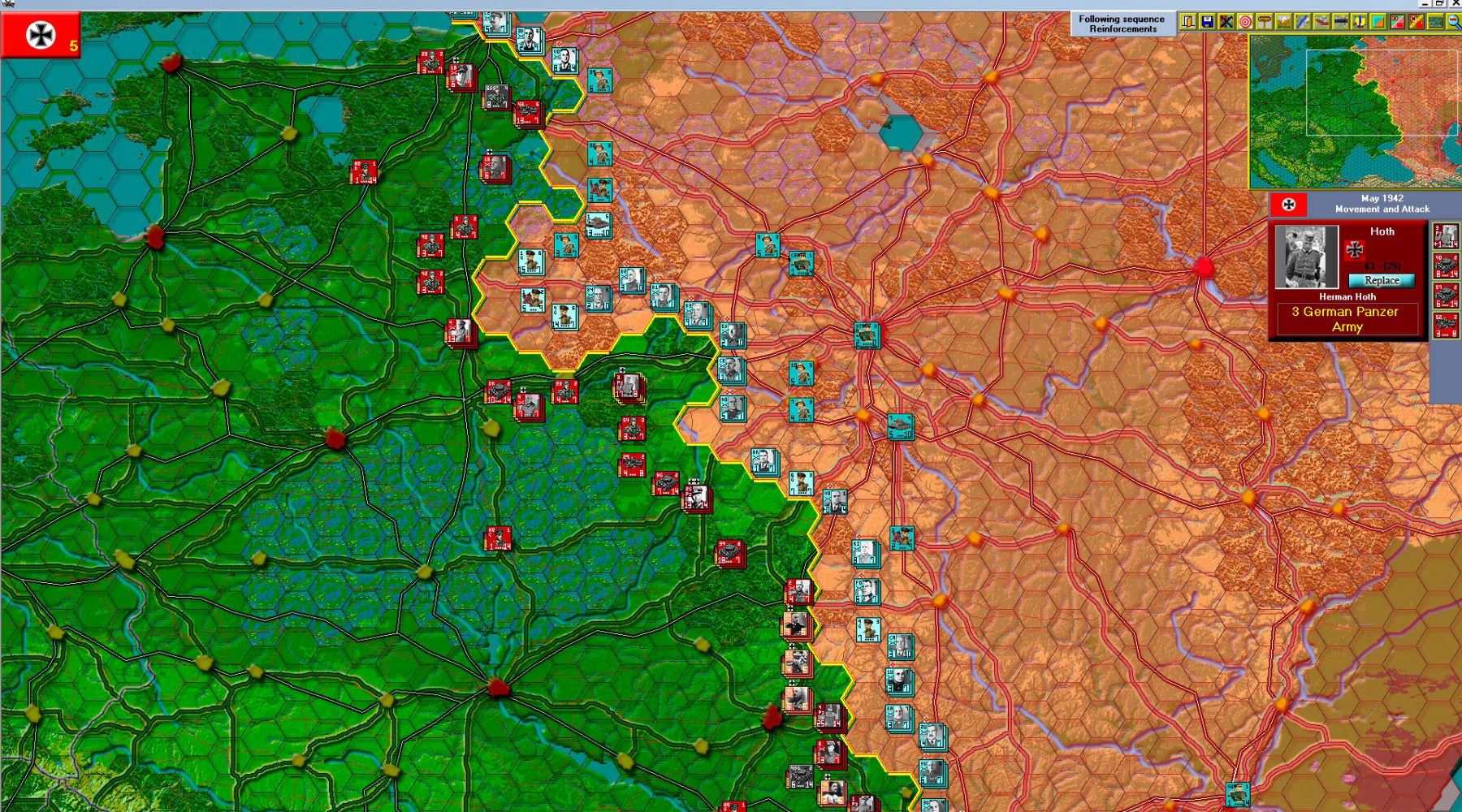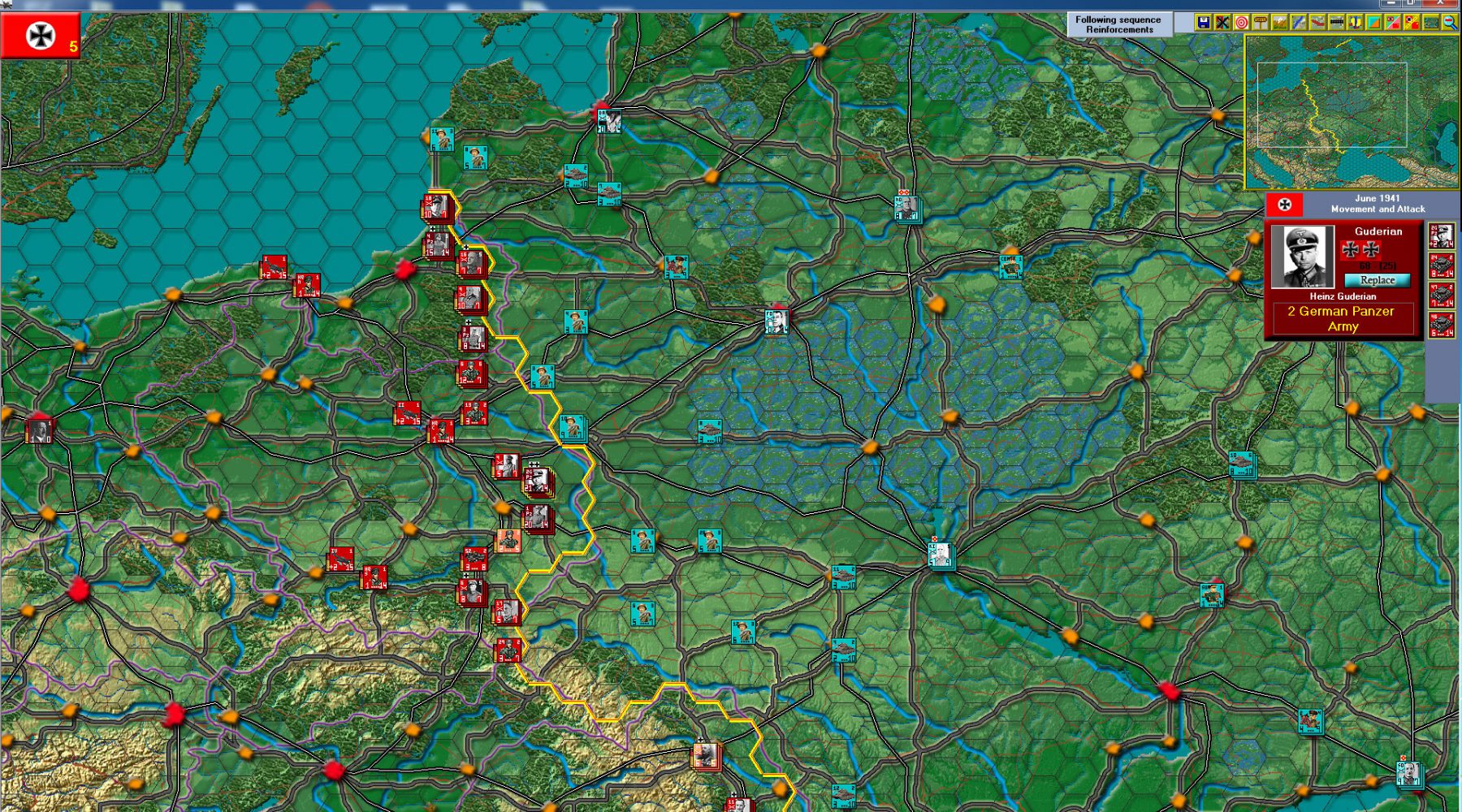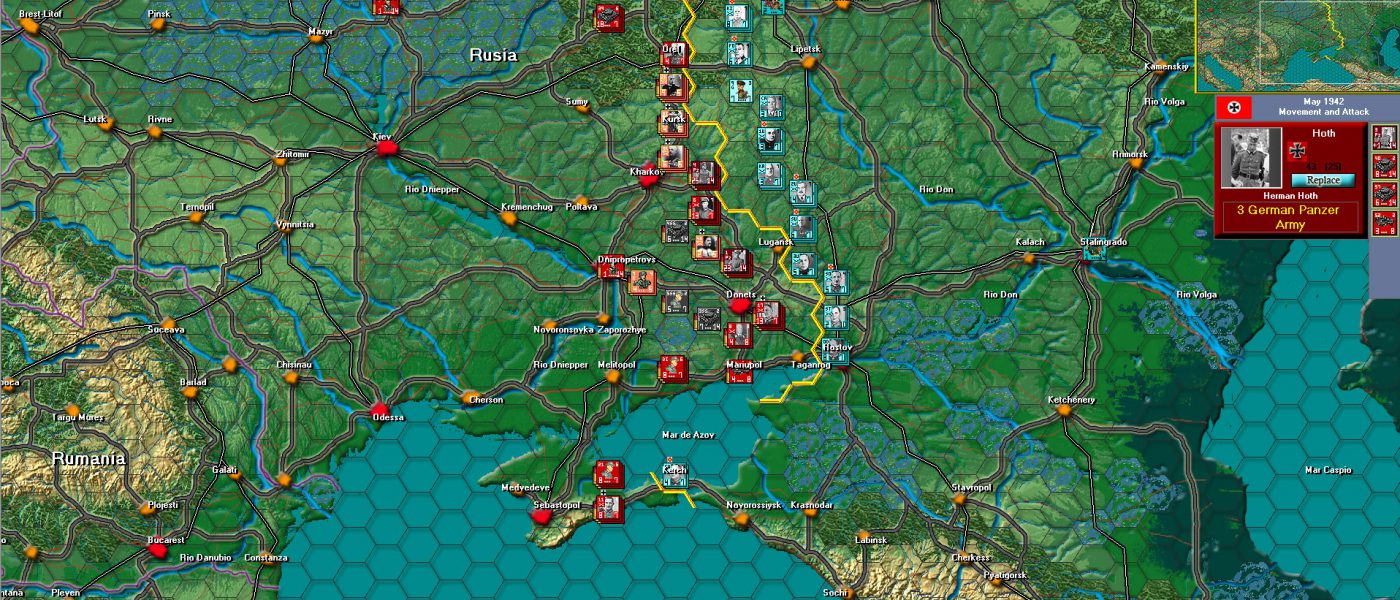
Historical Introduction
The Operation Barbarrossa was originally designed in December 1940, after the failure of the Battle of Britain. Hitler wanted to divide his forces and not repeat the mistake of Napoleon Bonaparte to invade such a large country by a single block of troops. Three army groups assigned to conquer large regions and cities of the Soviet Union were structured, these three initial objectives were, for the northern army group, Leningrad, for the army group Center, Moscow and for the army group South Kiev. At the end of the preparations, the Wehrmacht had mobilized about 3.2 million soldiers to the Soviet border, along with a million soldiers from allied countries and satellites, all prepared to launch a general offensive from the Baltic Sea to the Carpathians, counting for it with Rumania and Slovakia. There was, however, a discrepancy in the objectives: while Hitler gave priority to politics and economy, wishing to join the Finnish troops in the north as soon as possible and to occupy the agricultural wealth of the Ukraine in the south, the High Command wished to destroy the Soviet military power center in Moscow, the country’s main communications center. Hitler also did not have Japanese support for the campaign, since he had not consulted about it with the Japanese government that, after the attack, remained neutral in the conflict.As a result of the operation Barbarroja, Germany and Russia, they maintained a bitter war for 4 years, which culminated in the suicide of Hitler and the taking of Berlin in May 1945.
